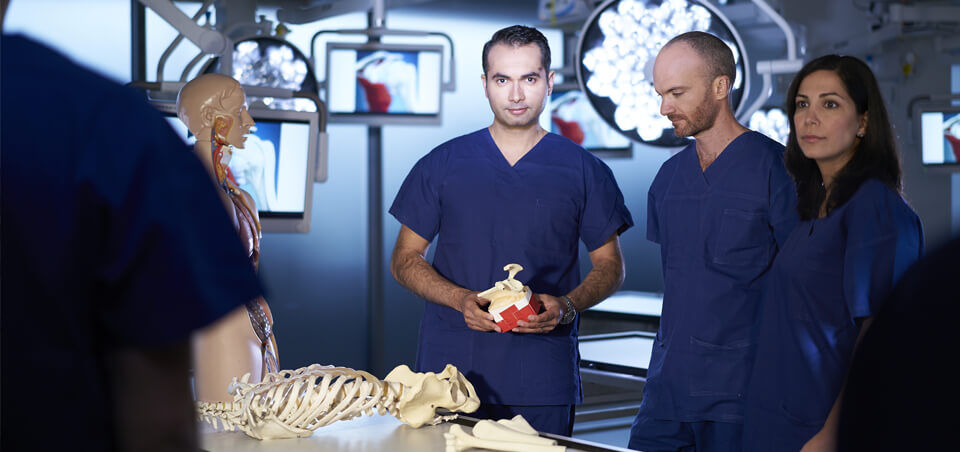Elbow Ligament Injuries
Knowledge that empowers
What are they?
There are two main ligament complexes that provide stability to the elbow joint. The medial (ulnar) collateral ligament complex is located on the inside of the elbow joint and the lateral collateral ligament complex is located on the outer side of the elbow joint.
The medial collateral ligament complex is comprised of an anterior band, a posterior band and the transverse ligament. The lateral collateral ligament complex is comprised of the lateral ulnar collateral ligament (LUCL), the annular ligament, the lateral radial collateral ligament and the accessory lateral collateral ligament.
Elbow ligament injuries typically occur when a stretching and/or rotational force is placed on the ligament that it is not capable of resisting. These ligaments are most commonly injured as a result of trauma such as an elbow dislocation or fall onto an outstretched hand. They may also be caused by repetitive stresses to the elbow such as those seen in throwing athletes. Other causes for elbow ligament injuries are quite rare.

Who is affected?
Elbow ligament injuries are seen in contact and extreme sports, but also in the general population as a result of a fall over the outstretched arm.
Medial collateral ligament injuries are commonly seen in throwing athletes, like baseball pitchers and javelin throwers, where the ligament may stretch out repetitively and eventually tear with poor biomechanics and/or high throwing loads.
What are the symptoms?
In a traumatic injury with elbow dislocation there is a clealy evident deformity and complete inability to move the elbow. Distal neurologic symptoms such as numbness to the hand might be present as well.
When the ligament injury is not associated with dislocation a painful tearing or popping sensation may be felt at the location of the ligament. After the injury, pain, swelling and bruising may develop.
How is the diagnosis made?
Diagnosis of an elbow dislocation is confirmed with a plain series of X-rays at the emergency department.
The X-rays will diagnose associated fractures. After relocation of the elbow joint an MRI might be necessary in the to detect the extension of ligament damage.
Diagnosis of ligament injury without a dislocation may be suspected after taking a thorough history and completing a detailed physical examination. This diagnosis is usually confirmed with MRI and a specific series of x-rays. These scans assist in evaluating the level of injury to the ligament.
What is the prognosis?
Most patients will recover well from an isolated ligament injury and most patients will benefit from a specific rehabilitation program to be completed under supervision from a physiotherapist.
Although in some cases surgery may be required to repair the ligament so that its strength and the stability of the elbow is restored. It is important to know that the elbow is particularly prone to develop stiffness following a ligament injury. Hence, the physiotherapy is paramount to recover full range of motion.
Non surgical treatment
Physiotherapy for an elbow ligament injury usually involves use of a custom fabricated brace to protect the early healing process and a specific set of range of motion exercises for the first 6 weeks. Following this period, it is imperative to restore normal range of motion to the joint and strength of the elbow muscles under the guidance of a physiotherapist.
Surgical treatment
Surgery is recommended for complex ligament injuries and those associated with fractures. The aim of the surgery is to stabilize the joint by restoring normal anatomy.
Surgery for elbow ligament injuries involves repairing the torn ligament by securing the torn end back to its insertion to the bone. This procedure is completed through an open incision.
There is also the possibility of chronic ligament injury due to failed conservative or operative treatment. For these cases the anatomical repair of the ligaments is not always possible, and a ligament reconstruction using an tendon auto- or allograft is necessary.
Following surgery, rehabilitation again involves use of a custom fabricated brace to protect the early healing process and a specific set of range of motion exercises for the first 6 weeks. Following this period, it is imperative to restore normal range of motion to the joint and strength of the elbow muscles under the guidance of a physiotherapist.
